Showing Spotlights 97 - 104 of 624 in category All (newest first):
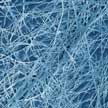 Researchers demonstrate composite materials with exceptional EMI shielding in the GHz and sub-THz frequency ranges while remaining electrically insulating. The composites use unusual fillers - chemically exfoliated bundles of quasi-one-dimensional van der Waals materials. The exceptional current conduction properties combined with extremely large aspect ratio of these composites couple strongly to high-frequency RF radiation while remaining electrically insulating in DC measurements.
Researchers demonstrate composite materials with exceptional EMI shielding in the GHz and sub-THz frequency ranges while remaining electrically insulating. The composites use unusual fillers - chemically exfoliated bundles of quasi-one-dimensional van der Waals materials. The exceptional current conduction properties combined with extremely large aspect ratio of these composites couple strongly to high-frequency RF radiation while remaining electrically insulating in DC measurements.
Feb 18th, 2021
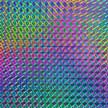 Beyond aesthetics, holograms on food - specifically, edible holograms - could be used to reduce packaging needs, for example, as information about nutritional content or labels could be printed directly onto the food item. To that end, researchers have developed a quick and low-cost fabrication method for producing holograms on edible substrates. They developed a direct laser interference pattering method to directly pattern one-dimensional nanostructures on corn syrup films.
Beyond aesthetics, holograms on food - specifically, edible holograms - could be used to reduce packaging needs, for example, as information about nutritional content or labels could be printed directly onto the food item. To that end, researchers have developed a quick and low-cost fabrication method for producing holograms on edible substrates. They developed a direct laser interference pattering method to directly pattern one-dimensional nanostructures on corn syrup films.
Feb 17th, 2021
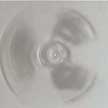 Magnetic manipulation of nano- and microscale objects is a remote and non-invasive technology with potentially numerous applications in material sciences and life sciences, such as for instance drug delivery. However, a limitation of this technology is that it can only be applied to certain materials with magnetic response, i.e., ferromagnetic or superparamagnetic materials. A new technique allows to incorporate magnetic nanoparticles onto the nonmagnetic skeleton.
Magnetic manipulation of nano- and microscale objects is a remote and non-invasive technology with potentially numerous applications in material sciences and life sciences, such as for instance drug delivery. However, a limitation of this technology is that it can only be applied to certain materials with magnetic response, i.e., ferromagnetic or superparamagnetic materials. A new technique allows to incorporate magnetic nanoparticles onto the nonmagnetic skeleton.
Feb 11th, 2021
 Virtual reality (VR) and augmented reality (AR) are some of the hottest multidisciplinary technology trends right now, integrating computer, various sensor, graphic image, communication, measurement and control multimedia, artificial intelligence, and other technologies. Interactive electronic textiles will provide suitable platforms for VR/AR applications to provide a full range of sensory perceptions. Intrinsic conductive nanomaterials such as carbon nanotubes and metallic nanowires as well as nanoscale devices such as triboelectric nanogenerators are key to developing these electronic textiles.
Virtual reality (VR) and augmented reality (AR) are some of the hottest multidisciplinary technology trends right now, integrating computer, various sensor, graphic image, communication, measurement and control multimedia, artificial intelligence, and other technologies. Interactive electronic textiles will provide suitable platforms for VR/AR applications to provide a full range of sensory perceptions. Intrinsic conductive nanomaterials such as carbon nanotubes and metallic nanowires as well as nanoscale devices such as triboelectric nanogenerators are key to developing these electronic textiles.
Dec 7th, 2020
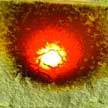 Wearable thermal insulation materials for harsh environments always require a compromise during their design and manufacturing. On one hand they need to be mechanically tough to provide impact resistance. On the other hand they need to be heat resistant. Now, researchers have developed a wearable aramid/ceramic aerogel nanocomposite material with both excellent mechanical and thermal properties. The key to this fabrication method is the in situ crosslinking that takes place between the silica pre-ceramic aerogel precursor and the Kevlar fibers.
Wearable thermal insulation materials for harsh environments always require a compromise during their design and manufacturing. On one hand they need to be mechanically tough to provide impact resistance. On the other hand they need to be heat resistant. Now, researchers have developed a wearable aramid/ceramic aerogel nanocomposite material with both excellent mechanical and thermal properties. The key to this fabrication method is the in situ crosslinking that takes place between the silica pre-ceramic aerogel precursor and the Kevlar fibers.
Nov 30th, 2020
 One of the issues with microfluidic devices in life sciences is that most platforms rely on materials or chemicals that are outside the biological breadth as building blocks, scaffolds, or coatings for the devices. In a game-changing approach, researchers are developing a transformative way to fabricate microfluidic devices, where solid walls are replaced by transparent, morphing fluid walls using only biocompatible materials. This novel method can generate cell-friendly microfluidic devices on demand with features below 50 microns in size.
One of the issues with microfluidic devices in life sciences is that most platforms rely on materials or chemicals that are outside the biological breadth as building blocks, scaffolds, or coatings for the devices. In a game-changing approach, researchers are developing a transformative way to fabricate microfluidic devices, where solid walls are replaced by transparent, morphing fluid walls using only biocompatible materials. This novel method can generate cell-friendly microfluidic devices on demand with features below 50 microns in size.
Nov 19th, 2020
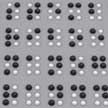 In order to make dynamic written content, for instance a news reader, available for blind or vision-impaired people, scientists have come up with various designs of sheet-type, refreshable Braille displays. Expanding the use of nanotechnologies in designing next-generation Braille readers, researchers now have successfully demonstrated a refreshable Braille display system by using a safe high-voltage power source - a triboelectric nanogenerator.
In order to make dynamic written content, for instance a news reader, available for blind or vision-impaired people, scientists have come up with various designs of sheet-type, refreshable Braille displays. Expanding the use of nanotechnologies in designing next-generation Braille readers, researchers now have successfully demonstrated a refreshable Braille display system by using a safe high-voltage power source - a triboelectric nanogenerator.
Nov 5th, 2020
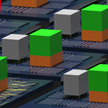 Researchers demonstrate that dust-sized photovoltaic cells grown on silicon substrate can be heterogeneously integrated with other chiplets using a high-throughput wafer-level packaging process. The ability to integrate various nanoelectronic chiplets - such as processor, memory, and photovoltaics - in an industrial-scale wafer-level-packaging process, unlocks the potential of large-scale manufacturing of these compact integrated systems with high performance and ultralow cost.
Researchers demonstrate that dust-sized photovoltaic cells grown on silicon substrate can be heterogeneously integrated with other chiplets using a high-throughput wafer-level packaging process. The ability to integrate various nanoelectronic chiplets - such as processor, memory, and photovoltaics - in an industrial-scale wafer-level-packaging process, unlocks the potential of large-scale manufacturing of these compact integrated systems with high performance and ultralow cost.
Oct 27th, 2020
 Researchers demonstrate composite materials with exceptional EMI shielding in the GHz and sub-THz frequency ranges while remaining electrically insulating. The composites use unusual fillers - chemically exfoliated bundles of quasi-one-dimensional van der Waals materials. The exceptional current conduction properties combined with extremely large aspect ratio of these composites couple strongly to high-frequency RF radiation while remaining electrically insulating in DC measurements.
Researchers demonstrate composite materials with exceptional EMI shielding in the GHz and sub-THz frequency ranges while remaining electrically insulating. The composites use unusual fillers - chemically exfoliated bundles of quasi-one-dimensional van der Waals materials. The exceptional current conduction properties combined with extremely large aspect ratio of these composites couple strongly to high-frequency RF radiation while remaining electrically insulating in DC measurements.
 Subscribe to our Nanotechnology Spotlight feed
Subscribe to our Nanotechnology Spotlight feed





